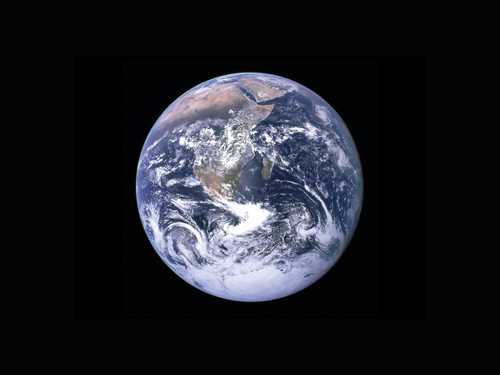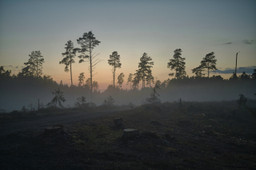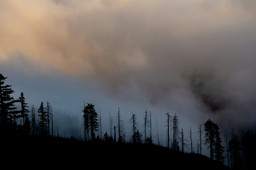
Ecocide – and why its legal recognition is so important
The ongoing Holocene extinction event sees human activities continue to wipe out species at rates 100 to 1,000 times higher than is natural. Not unconnected is the risk posed to the last wildernesses by urban expansion and by it being turned into farmland.
But how can the individuals, companies, and governments responsible for these attacks on the natural world be held to account?
Here, following on from ‘Legal Rights for Nature!’, our article about Earth rights, Earth.fm attempts to answer this question by looking specifically at the subject of ecocide.
So, what exactly is ecocide?
The word ‘ecocide’ was coined in 1969 by Professor Arthur W. Galston – a US biologist who identified the defoliant effects of a chemical later developed into Agent Orange. As ‘homicide’ means the killing of a human, with the ‘-cide’ suffix derived from the Latin verb ‘caedere’ (‘to cut down’ or ‘to kill’), so the literal meaning of ‘ecocide’ is ‘to kill the environment’.
In practice, definitions vary. At base, ecocide constitutes a crime against nature, while some definitions emphasise magnitude (“severe and mass-scale environmental destruction”).
In 2021, the Independent Expert Panel for the Legal Definition of Ecocide, convened by the Stop Ecocide Foundation (the charitable arm of global advocacy non-profit organisation Stop Ecocide International), proposed the following consensus definition of ecocide as an international crime:
“‘[E]cocide’ means unlawful or wanton acts committed with knowledge that there is a substantial likelihood of severe and either widespread or long-term damage to the environment being caused by those acts.”
The panel further specified that, for the purposes of this definition, “‘[e]nvironment’ means the earth [sic], its biosphere, cryosphere, lithosphere, hydrosphere and atmosphere, as well as outer space”. That includes (but is not limited to) all parts of the planet that support life, including its frozen parts, the upper portion of the mantle and the crust, all of its water, and the gases enveloping it.
The Commentary and Core Text released alongside the definition noted that providing a consensus definition of ecocide was intended to contribute to international law’s part “in transforming our relationship with the natural world […] from one of harm to one of harmony” – particularly given the acknowledged “inadequacies of current global environmental governance”.

It’s notable that, in this definition, “[t]he crime of ecocide is […] formulated as a crime of endangerment rather than of material result” – that is to say, it is carrying out acts “with knowledge of the substantial likelihood that they will cause severe and either widespread or long-term damage that is criminalised”, as opposed to a specific outcome. Genocide, as defined within the Rome Statute of the International Criminal Court (the treaty that established the ICC, “established to end impunity of the most serious crimes of concern to the international community”), is a relevant precedent here, as “the crime consists in carrying out actions intended to reach” the destruction of a protected group; it can be prosecuted whether or not “the protected group [is] actually destroyed”.
Is ecocide recognized in law?
Yes – but only in 12 countries. Vietnam became the first to recognize ecocide, in 1990. All of the countries in question are located in Eurasia, predominantly in Eastern Europe, the Caucasus, and Central Asia.
Both Russia and Ukraine number are among the 12, with Ukraine “currently collecting evidence and building legal cases against Russia in the ICC over environmental damage stemming from Moscow’s 2022 invasion and seizure of the Chernobyl and Zaporizhzhia nuclear power plants”.
In addition, Italy, Finland, Denmark, Brazil, Peru, and Mexico have all begun discussions which could see them also add ecocide to their criminal codes.
A more consistent international recognition of ecocide as a crime would “provid[e] an enforceable framework to deter destructive practices”; this is what organizations such as Stop Ecocide and the End Ecocide on Earth initiative are working towards, while ClientEarth “use[s] the law to hold polluting companies and negligent governments accountable”.
The Stop Ecocide Foundation definition given above is “part of an ongoing effort […] to add environmental damage to the list of international crimes at the International Criminal Court”. If included in an amendment to the Rome Statute of the ICC, ecocide would sit alongside four core international crimes: genocide, crimes against humanity, war crimes, and the crime of aggression.
However, to make ecocide an international crime would require the establishment of a new law or an amendment to the ICC’s Rome Statute, for which a two-thirds majority would be needed among the 124 countries that have ratified the treaty. The ICC would also only be able to prosecute crimes within those 124 countries – a tally which doesn’t include several substantial greenhouse gas emitters, such as China, India, the United States, and Russia.
Furthermore, environmental crimes’ complexity could mean that ecocide would be difficult to prosecute, particularly when it would be necessary “to identify individuals deemed responsible for disasters caused by climate change” – to say nothing of securing convictions.
What is the history of ecocide?
Definitions for international crimes including ‘genocide’ and ‘crimes against humanity’ were established in the aftermath of World War II. Formalizing ecocide as a crime is not only inspired by that work, but “draws from both terms, in form and substance” – fittingly, given the hope that “ecocide might take its place as the fifth international crime”.
Attempts to endorse this cause include Richard A. Falk (now professor emeritus of international law at Princeton University) drafting an Ecocide Convention in 1973, and UN special rapporteur Benjamin Whitaker (a former Labour MP and human rights lawyer) proposing the inclusion of ecocide into the definition of genocide in 1985, and during the formal establishment of the ICC in 1998.
Subsequently – following earlier proposals for ecocide to be included in the Rome Statute on international crimes against humanity being dropped, in 1996 – Polly Higgins sold her house and gave up a highly paid job in order to “le[a]d a decade-long campaign for ‘ecocide’ to be recognised as a crime against humanity”. In addition, she created momentum by writing the book Eradicating Ecocide, lobbying the law commission of the United Nations, organizing mock trials, and establishing a trust fund for ‘Earth protectors’.
More recently, in 2019, Pope Francis “suggested that ecocide should be considered a fifth category of crimes against peace”, while Vanuatu and the Maldives – island states vulnerable to climate change – officially called for International Criminal Court (ICC) member states to consider adding the crime to the Rome Statute. And, in 2024, the Democratic Republic of Congo formally endorsed the creation of ecocide as an international crime, becoming the first African nation to do so.
What are some examples of ecocide?
General categories of ecocide include:
- Deforestation (so ubiquitous that it may be surprising to consider it being a form of ecocide, but here it is) whether for timber or to use the land for urbanization, industrialization, or agriculture
- Damage to the ocean or rivers, for example caused by oil spills, industrial fishing, or contamination by plastics
- Damage to soil, from chemical spills, mining activities, or as an after-effect of deforestation
- Air pollution, either from carbon dioxide or other greenhouse gas emissions from industrial production, or from radiation from damage to reactors or the use of nuclear weapons.

Specific examples of ecocide include:
- The US’ use of Agent Orange during the Vietnam War (1955–1975), which saw 12,000 square miles (31,000 km²) of forest defoliated to expose “enemy troops” (and destroy their crops). The chemicals used made reforestation difficult and steeply reduced animal diversity. In part because of its byproduct, dioxin, “the most toxic substance ever created by humans”, its effects persist today (not least in the “devastating health consequences” – cancers, diabetes, birth defects, and other disabilities – with which it is associated).
- The Chernobyl disaster (1986), which caused the immediate mass death of pine trees and the long-term contamination of soil and water, impacting the entire food chain and leading to mutations in plants and animals, and including continued impacts on animal health and reproduction.
- The Deepwater Horizon oil spill (2010): largely the fault of BP and its partners, due to a series of cost-cutting decisions and an inadequate safety system, this, the largest marine oil spill in history, covered a surface area of 30.4 square miles (149,000 km²), caused the death of marine life on a huge sale, damage to coastal ecosystems in the area, and contamination of the food web, threatening everything from “whale sharks to seagrass”.
- The disappearance of the Aral Sea (1960–present): this, the fourth-largest freshwater lake in the world, covered an area of 26,300 square miles (68,000 km²), but has now almost completely succumbed to desertification. Located in Central Asia between Kazakhstan and Uzbekistan, since the 1960s the Aral Sea dwindled in size due to the rivers that fed it being diverted by Soviet irrigation projects. As a result, the ecosystem it supported collapsed, while pesticides, fertilizers, and other toxic chemicals from industrial projects have left the area polluted with toxins and heavy metals which have entered the food chain with dire effects on human and animal life.
- The Great Pacific Garbage Patch (c. 1945–present), a gyre (circular ocean-surface current) of marine debris particles estimated to cover 620,000 square miles (1.6 million square kilometres), and which is thought to have increased in size ten-fold every decade since 1945. Though the area continues to grow rapidly, its low density makes it hard to detect, as it consists primarily of suspended particles which range from “fingernail-sized” to microscopic microplastics. This sort of debris can injure or kill marine life which becomes entangled, or, by ingestion, accumulates within organisms, where it can increase the risk of diseases including cancers. By entering the food web, harmful microplastics can also end up in the food that we consume.
- The Bhopal disaster (1984), a chemical accident which led to more than 500,000 people being exposed to methyl isocyanate, a highly toxic gas which leaked from a pesticide plant in the Indian state of Madhya Pradesh. The immediate human death rate is contested (around 16,000), but effects on the surrounding environment, including the contamination of soil and groundwater with toxic and potentially carcinogenic substances, are ongoing.
What are the benefits of further criminalizing ecocide?
The above limited examples of the ugliness of ecocide are a sobering reminder of the vital importance of accountability being maintained via legal protection.
Where existing international crimes generally address individual responsibility, ecocide is primarily a corporate crime (even if these corporations are frequently backed by governments). And corporations rely on reputation for the maintenance of their share price and other factors. Therefore, where “a war criminal or a genocidaire [is unlikely] to be concerned first and foremost with public image”, it can be hoped that being tried alongside such figures will successfully discourage corporations from engaging in ecocidal activities.
Furthermore, since “CEOs [are obliged] to consider maximisation of profit above all else”, international recognition of ecocide as a crime would incentivize innovation in fields of sustainable, environmentally conscious business practices. In this way, expanded legislation against ecocide would support nature-positive frameworks such as “regenerative agriculture, circular economy, [and] renewable energy”.

International recognition of ecocide would also endorse its existential significance, and mean that state sovereignty could not “be claimed to shirk liability”. This would also protect the global commons – resources and areas not under the jurisdiction of any one country (for example, extraterritorial waters, Antarctica, and the planet’s atmosphere) – recognizing “the duty of humanity to protect them” and the ecological systems they support, maintaining them for future generations.
What is the future of ecocide?
Valérie Cabanes, a French lawyer and member of the Expert Panel for the Legal Definition of Ecocide, states that, “By destroying the ecosystems on which we depend, we are destroying the foundations of our civilization and mortgaging the living conditions of all future generations”. She further notes that this can hardly be said to be less significant than the international crimes enshrined in the Rome Statute.
The scientific and technological advances which kickstarted, through the industrial revolution, a transition from an agricultural economy to one based upon large-scale industry and mechanized manufacturing has “brought prosperity to many but also […] relentless destruction to our planetary home”. The ripple effects of activities such as deforestation and pollution are becoming ever more palpable through global warming, extreme weather events, and rises in diseases caused by pollution. In 2010, the yearly cost of this damage to the environment – caused “by the actions of the world’s top 3000 companies” – amounted to an astronomical $1.75 trillion (£1.4 trillion) of damage.
Recognizing the severity of ecocide as being equivalent to crimes such as genocide could “revolutionize the way the international community thinks of environmental endangerment” and “begin to rebalance the heavily anthropocentric current focus of the global legal system”.
Earth.fm is a completely free streaming service of 1000+ nature sounds from around the world, offering natural soundscapes and guided meditations for people who wish to listen to nature, relax, and become more connected. Launched in 2022, Earth.fm is a non-profit and a 1% for the Planet Environmental Partner.
Check out our recordings of nature ambience from sound recordists and artists spanning the globe, our thematic playlists of immersive soundscapes and our Wind Is the Original Radio podcast.
You can join the Earth.fm family by signing up for our newsletter of weekly inspiration for your precious ears, or become a member to enjoy the extra Earth.fm features and goodies and support us on our mission.
Subscription fees contribute to growing our library of authentic nature sounds, research into topics like noise pollution and the connection between nature and mental wellbeing, as well as funding grants that support emerging nature sound recordists from underprivileged communities.

